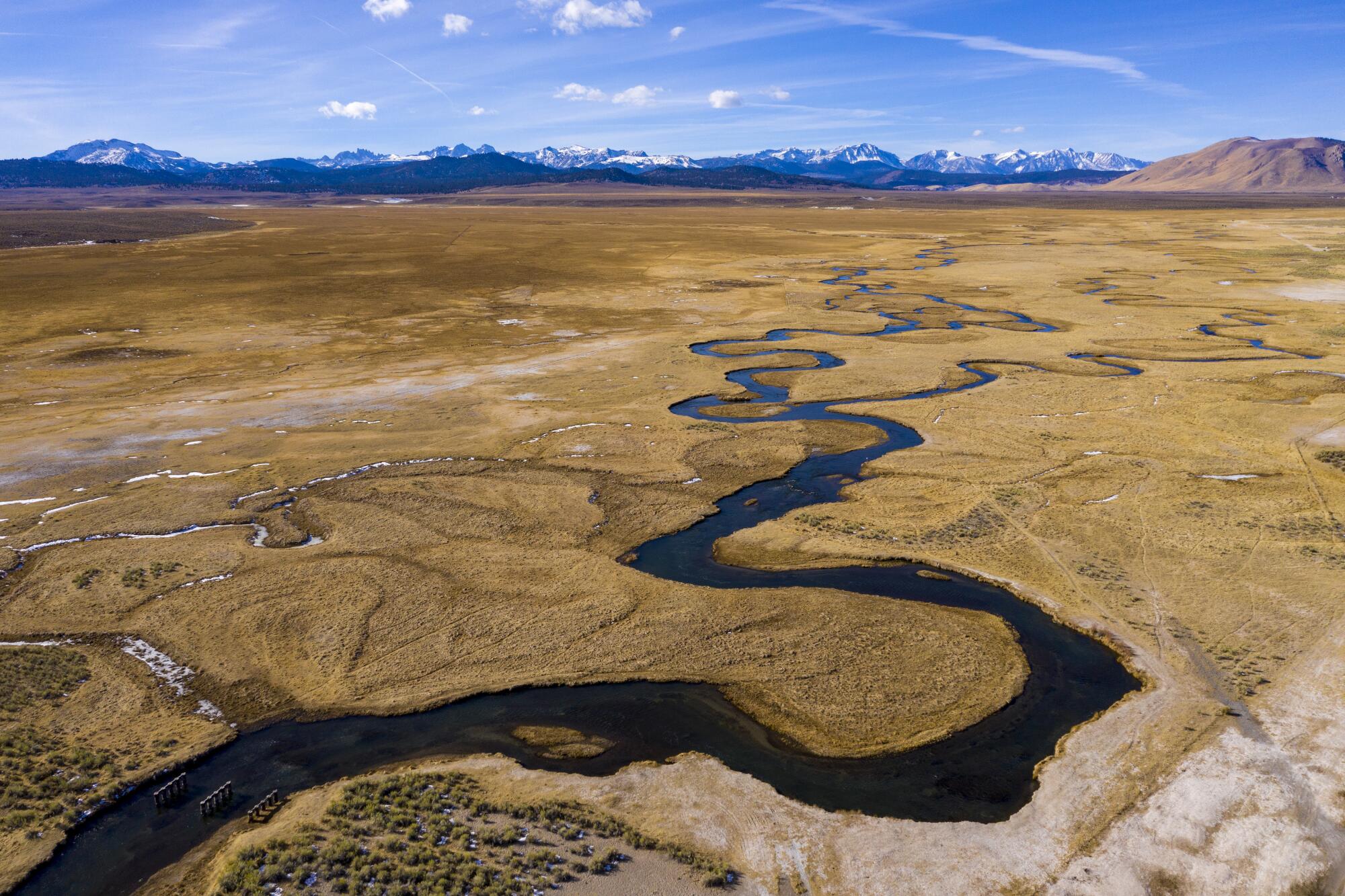
MAMMOTH LAKES — Since the early 1920s, the Long Valley plains east of Yosemite have inspired comparison to a rustic Western paradise — an idyllic frontier where sparkling creeks meander through lush pastures, waters teem with feisty trout and sage grouse make ostentatious displays of romance.
Much of this great, green expansiveness, however, owes to the Los Angeles Department of Water and Power, which aggressively purchased land and water rights here more than a century ago. The department’s routine annual deliveries of free surplus water to its tenants have helped sustain ranching operations and habitat for many decades.
For the record:
5:53 p.m. Jan. 30, 2021A previous version of this article misspelled the last name of Alameda County Superior Court Judge Evelio Grillo as Grilla.
But that relationship is now at risk of ending, and could carry dire consequences for one of California’s most striking and violently formed landscapes.
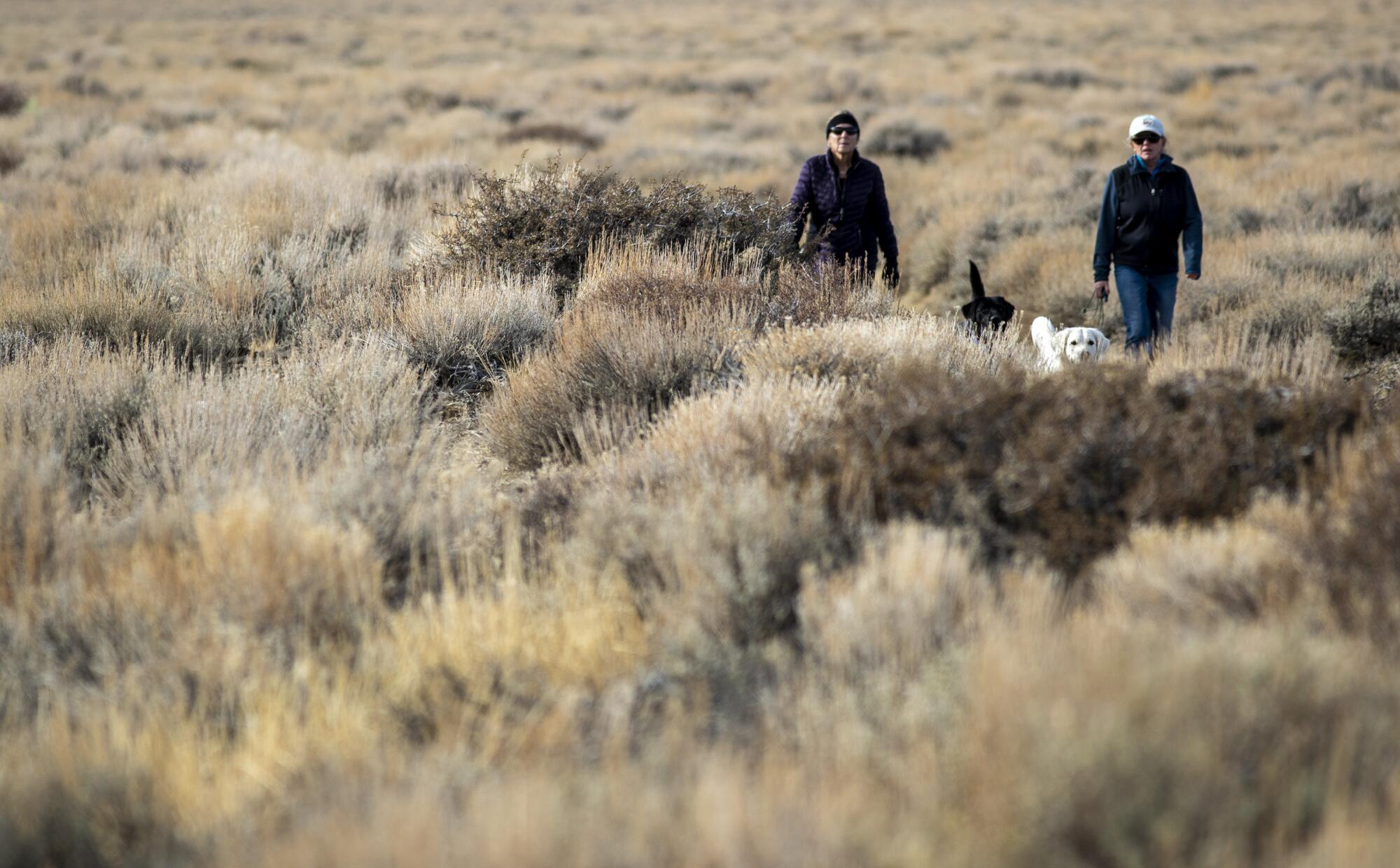
Citing the impacts of climate change and decreased snowpack — as well as the demands of 4 million ratepayers about 300 miles to the south — the DWP has told ranchers they should no longer expect free water for irrigation uses. The planned water cutbacks, which were first announced in 2018, would affect some 6,400 acres of land near Crowley Lake — an area that was shaped by an immense volcanic eruption 760,000 years ago.
The move to end water giveaways has not only angered ranchers, but it has also stunned local officials and environmentalists, who say dewatered pastures will increase the risk of wildfire and reduce sage grouse habitat, among other things.
In a joint lawsuit filed by Mono County and the Sierra Club, plaintiffs charge that the DWP failed to properly consider the environmental consequences of its decision.
For seven decades, the DWP has provided several lessees in the area about 5 acre-feet of water per acre, per year, which made their pastures nutritious through summer and added luster to the area’s biking, hiking and angling hot spots. (An acre-foot of water equals about 326,000 gallons, more than enough to supply two households for a year.) To suddenly end that supply without first conducting an environmental review violates the California Environmental Quality Act, plaintiffs say.
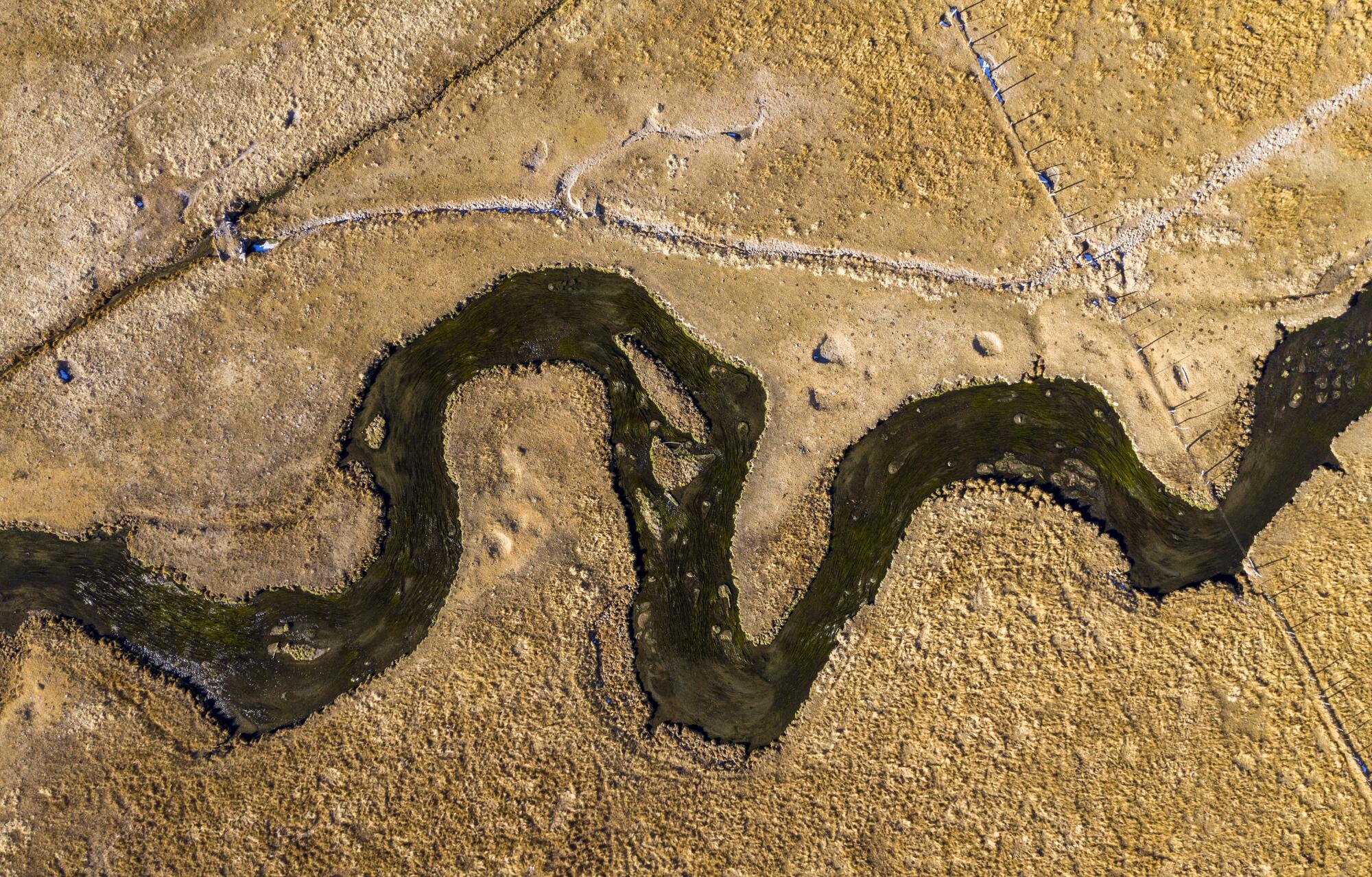
“What we asked the DWP to do in this lawsuit is simple,” said Stacey Simon, the attorney representing Mono County in the case. “Before making drastic changes which impact ecosystems and environment across an entire region, take time to figure out what those changes mean not only to the eastern Sierra, but also downstream in Los Angeles.
“It is not only the right and responsible thing to do,” she said, “it is also the law.”
The California Department of Fish and Wildlife has also entered the fray on behalf of Mono County out of concern for the survival of one of the most legally contested birds in America, a genetically distinct clan of sage grouse unique to the California-Nevada border.
In court documents, state wildlife officials argue that the DWP should have conducted an environmental review before warning ranchers to prepare for “dry leases” on pasturelands that overlap sage grouse strongholds.
The DWP has promised to continue providing water needed to “reasonably support” the sage grouse in southern Mono County’s Long Valley. But state wildlife officials dismiss that strategy as “stabs in the dark” because it is not supported by a scientific study to determine how much water is needed to sustain the sage grouse and its habitat.
The DWP has said the water giveaways have become an extravagance due to changes in the climate — specifically, less snowpack, shorter rainy seasons and periods of prolonged drought.
The agency said in 2018 it would have to spend about $18 million to replace the water requested annually by local ranchers and to make up for the lost hydropower it could generate — an unacceptable burden for L.A. ratepayers of about $30 per family per year.
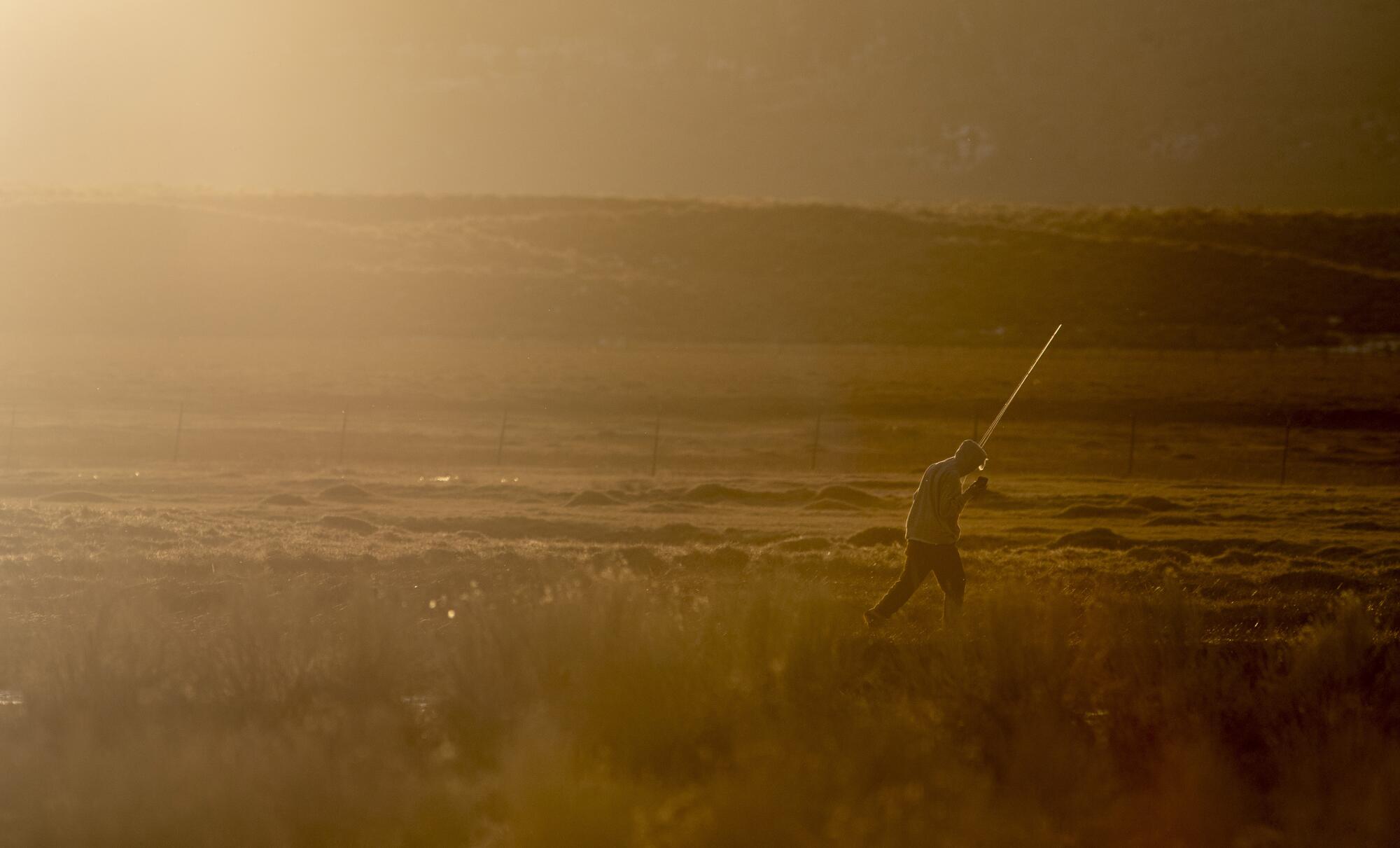
In addition, they point out that water was never a guarantee tied to 20-year leases held by about a dozen ranchers in the area. They pay an average of $10 to $15 per acre, per year to graze on DWP property.
Final arguments in the case are scheduled to be heard on Feb. 11. A preliminary order issued recently by Alameda County Superior Court Judge Evelio Grillo said the DWP must continue delivering water to its Long Valley lessees in historic quantities until it completes an environmental review.
Los Angeles acquired the land in the early 1900s, when city agents posed as ranchers and farmers to buy water rights in Mono and nearby Inyo counties with the goal of building an aqueduct system to meet the needs of the growing metropolis to the south. The diversion of water dealt a serious blow to local agriculture, and shifted the region’s economy toward tourism.
Water wars have defined the eastern Sierra Nevada region ever since. In previous legal battles, the DWP was forced to give up significant amounts of water to steady water levels in Mono Lake, re-water parts of the dry Owens Lake to help prevent dust storms and restore a 62-mile stretch of the Lower Owens River.
Lynn Boulton, a spokeswoman for the nonprofit group Keep Long Valley Green, supports local efforts aimed at “making it work to have both cattle grazing and sage grouse sharing meadows and pastures” irrigated with ample DWP water allotments.
Kristopher Hohag, former vice chairman of the Bishop Paiute Tribe and regional organizer for the Sierra Club, however, is not so sure. “Managing a complex landscape like this for dollars and cents,” he said, “is questionable because economic forces do not respect nature.”
But some conservationists cringe at the very notion of allowing both the DWP and commercial cattle ranchers to continue operating without accepting responsibility for the environmental damage they cause in the area just south of the Mammoth Mountain ski resort.
Among them is Laura Cunningham, an ecologist and former state fisheries biologist familiar with the region’s spiderweb-like network of irrigation ditches, diversions, and dams.
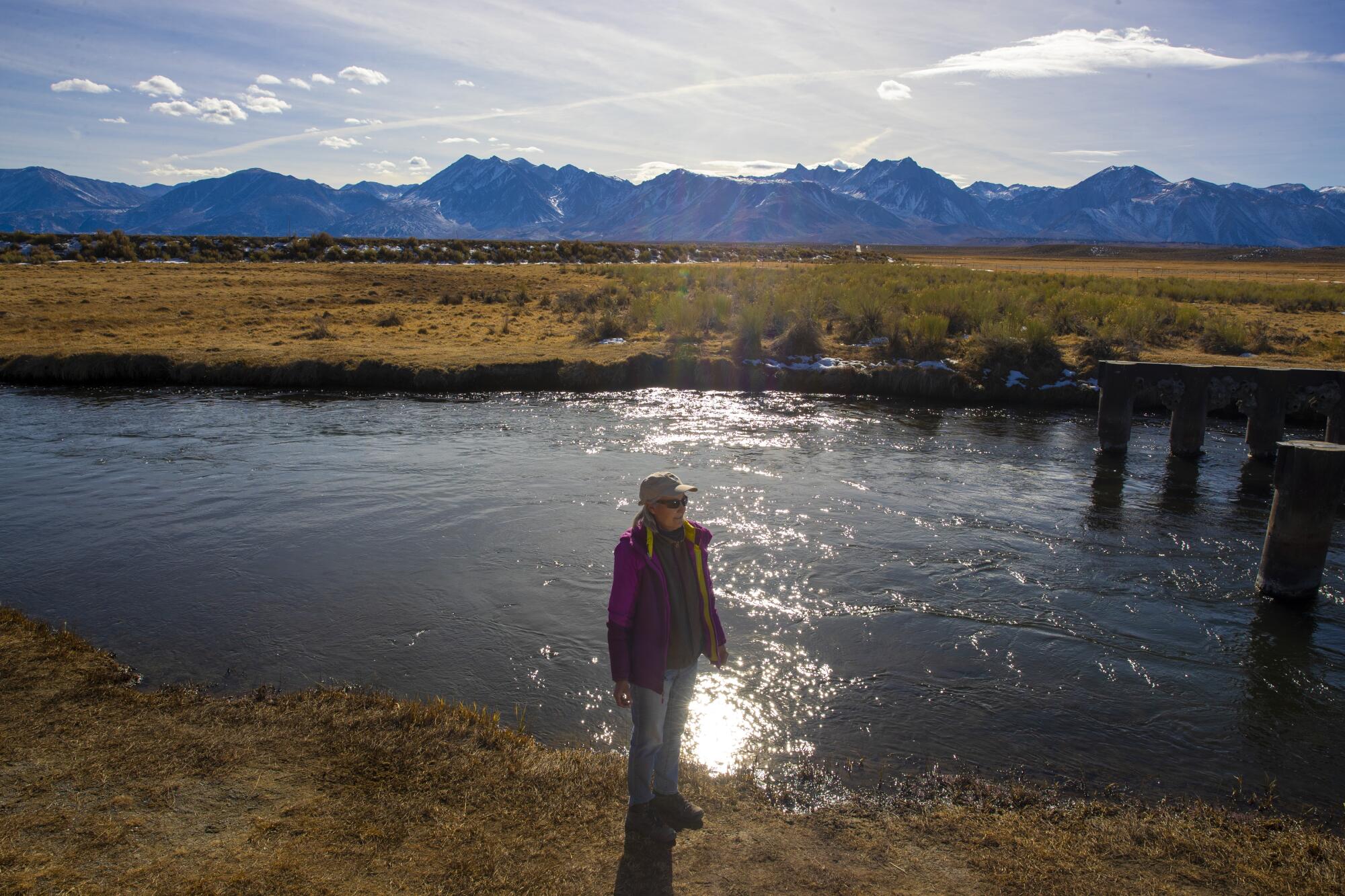
As the sun rose over Long Valley on a recent weekday, Cunningham brought her four-wheel-drive truck to an abrupt stop near a stretch of the Owens River shared for decades by nature enthusiasts, anglers, livestock and prized trout.
Moments later, she was striding toward a riverbank severely eroded by grazing cattle whose droppings had transformed gravel spawning grounds for fish into muck the consistency of peanut butter.
Cunningham reached down and scooped up a handful of mud from the shallows. “Trout thrive in streams with cold, clean water and rocky sand on which to lay their eggs,” she said, shaking her head. “Yet, this is what they’ve got to live with here.”
The surrounding meadows of grass and bulrush grazed to their roots, “were once home to herds of antelope, and thousands of sage grouse,” she said.
“Sage grouse populations are now crashing,” added Cunningham, California director of Western Watersheds Project. The project, along with the Center for Biological Diversity and WildEarth Guardians, is part of a coalition that filed suit last year against the U.S. Fish and Wildlife Service for failing to shield the bird from livestock grazing, mining and the great thirst of the city.
Overall, she said, the decline of Long Valley’s landscape can be expressed in stark simplicity: “Science and economics get political in a hurry around these parts.”







